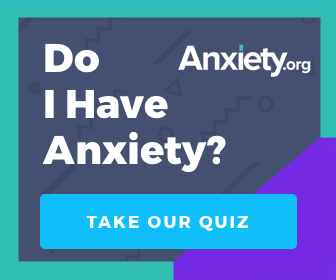Separation anxiety disorder describes an individual’s feelings of persistent and excessive anxiety related to current or oncoming separation from an attachment figure (someone or something that provides the individual with comfort). Separation disorder frequently occurs in children, and can induce long-lasting, continuous anxiety for periods up to six weeks. Individuals afflicted by separation anxiety disorder experience overwhelming distress and anxiety when separated from their attachment figure.
Symptoms of separation anxiety
Symptoms of separation anxiety disorder can manifest psychologically and physically. The most common psychological symptoms are:
- High levels of distress and anxiety when separated from home or the attachment figure
- Constant worry over losing the attachment figure or having harm done to it
- Persistent worry about experiencing an event that would cause separation from the attachment figure
- Difficulty or refusal to go out for fear of separation
- Fear of being alone or without attachment figure
- Reluctance of sleeping away from home or going to sleep without being near attachment figure
- Nightmares about separation
Separation anxiety disorder can also manifest physical symptoms such as:
- Headaches
- Stomachaches
- Nausea
- Vomiting
- Bed wetting
Physical symptoms are more often seen with separation anxiety in adults and teens.
Separation anxiety in children
Separation anxiety disorder affects people of all ages, but is most commonly seen in children and teens under 18. A common sign to look for in children is a strong reluctance to go to school. Children who refuse to go to school may not want to go because they do not want to be separated from their attachment figure.
Feeling a bit of anxiety when separated from security objects and comfort zones is natural. It is around ages three to four when social anxiety can become a bigger problem. When separation anxiety becomes overwhelming and begins to interfere with daily activities, such as going to school or work, it could be possible that these natural worries have evolved into a clinical case of separation anxiety disorder.
Treatment for separation anxiety
Psychotherapy — cognitive behavioral therapy in particular — is commonly used to treat separation anxiety disorder. Given that separation anxiety disorder is treatable and typically starts at a young age, talk with your child’s pediatrician if any separation anxiety disorder symptoms exist. He/she can help diagnose your child and/or direct you to the appropriate physician who can help teach both the child and parents healthy separation techniques.
Consult your doctor if you believe you or your child have any of the symptoms related to this disorder and discuss the benefits and risks of any methods that could potentially be used to treat those symptoms.
Dr. Chloe Carmichael, Ph.D, is a licensed clinical psychologist, known as Dr. Chloe. She holds a master’s degree and Ph.D. in clinical psychology from Long Island University and graduated Phi Beta Kappa, summa cum laude, with a bachelor’s degree and departmental honors in psychology from Columbia University in New York. Her practice in New York City employs multiple therapists to serve high-functioning business executives, people in the arts, and everyday people seeking support with personal or professional goals.
Dr. Chloe is the author of the book Nervous Energy: Harness the Power of Your Anxiety, endorsed by Deepak Chopra! She is a member in good standing of the American Psychological Association, as well as the National Register of Health Psychologists, an elite organization for psychologists with gold-standard credentials. She is also a consultant at Baker McKenzie, the third largest law firm in the world.
She is an Advisory Board member for Women’s Health Magazine (Hearst), and a featured expert for Psychology Today. Dr. Chloe enjoys relating with the media, as well as public speaking. She has been featured as an expert on VH1, Inside Edition, ABC Nightline and other television; and has been quoted in the New York Times, Forbes, Vanity Fair, Shape, Cosmopolitan, Rolling Stone, and other print media.



